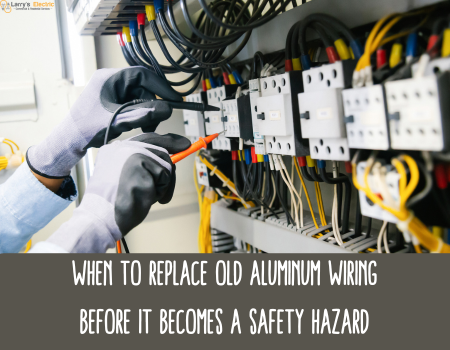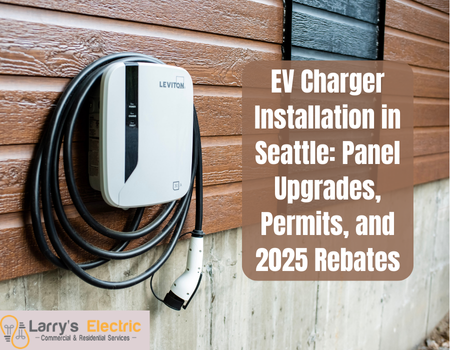Seattle’s housing market is full of charming older homes with beautiful character. Unfortunately, many of those homes still have outdated knob-and-tube wiring hidden behind their walls. This early 20th-century electrical system—made up of ceramic knobs, tubes, and insulated copper wires—was state-of-the-art when installed but is now considered unsafe by modern standards.
If you own a home in Seattle with knob-and-tube wiring, replacing it is often necessary not only for safety but also for insurance and resale purposes. Here’s what you need to know about potential costs, timelines, and the often-overlooked permitting issues that can trip up homeowners.
Why Replace Knob-and-Tube Wiring?
Knob-and-tube (K&T) wiring lacks grounding and isn’t designed to handle the electrical demands of today’s appliances and technology. Over time, the insulation can become brittle, leaving bare wires exposed. Homeowners who keep knob-and-tube wiring may face:
- Fire hazards from overheated wires or damaged insulation
- Difficulty getting homeowner’s insurance, as many carriers refuse coverage
- Trouble selling the home, since buyers are wary of outdated wiring systems
- Limitations on adding circuits or upgrading electrical panels
Replacing the wiring not only eliminates these risks but also allows you to bring your entire electrical system up to current Seattle code.
What to Expect When Hiring an Electrical Contractor for Knob-and-Tube Replacement in Seattle?
The cost of replacing knob-and-tube wiring varies based on the size and layout of your home. In Seattle, homeowners can contact us for a free estimate for a full rewiring project.
Factors that affect price include:
- Square footage and number of stories: Larger homes require more wiring and labor.
- Accessibility: Homes with easy access to attics and crawl spaces cost less to rewire than those requiring extensive drywall removal.
- Electrical panel upgrades: Many homes with knob-and-tube wiring also need a new electrical panel to handle modern capacity.
- Restoration costs: If walls and ceilings must be opened, you’ll also need to budget for drywall repair and repainting.
For a 1,500–2,000 square foot home, the electric wiring alone can get expensive quick. We recommend obtaining at least three bids and confirming that they include all restoration and permit fees.
How Long Does the Project Take?
Knob-and-tube replacement is not a one-day job. A straightforward rewire typically takes 7–14 business days, depending on the size of your home and the crew size. Homes with complex layouts or plaster walls can take longer.
The process generally follows these steps:
- Inspection and planning: Your electrician will map out the existing wiring and plan the safest, least invasive way to run new circuits.
- Permit approval: Work can’t begin until the City of Seattle issues a permit. This may take 1–2 weeks depending on city workload.
- Wiring installation: Electricians replace the old wiring room by room, often working in attics, crawlspaces, and behind walls.
- Rough-in inspection: A Seattle inspector must sign off on the wiring before any walls are closed.
- Drywall and restoration: Openings are patched, sanded, and painted.
Because of the multiple steps and inspections, you should plan for the entire process—including permitting and restoration—to take three to four weeks from start to finish.
Permit Gotchas Seattle Homeowners Should Know
Permits are not optional when replacing knob-and-tube wiring. The City of Seattle requires a permit for any rewiring project, and failing to get one can result in fines, insurance issues, and problems during a future sale.
Here are some common pitfalls:
- Underestimating timeline: Permit approval and inspections can add 1–2 weeks to your project. Schedule accordingly.
- Skipping a panel upgrade: If your existing electrical panel can’t handle new circuits, the city may require an upgrade before issuing a final inspection.
- Working without a licensed electrician: Only licensed electrical contractors can pull the necessary permits. DIY rewiring without a permit is a major liability.
- Historic homes: If your house is in a designated historic district, you may face additional review steps before work can begin.
To avoid delays, hire an electrician familiar with Seattle’s permit process. They can handle paperwork, schedule inspections, and ensure your project passes the first time.
Knob-and-tube replacement in Seattle is a significant investment, but it’s one that pays off in safety, functionality, and peace of mind. With timelines stretching several weeks, it’s important to budget carefully and work with a qualified electrical contractor.
By securing permits up front and planning for inspections and restoration, you can avoid frustrating delays and unexpected expenses. Once the project is complete, you’ll have a modern, code-compliant electrical system that supports today’s energy needs—and makes your home more attractive to future buyers.









